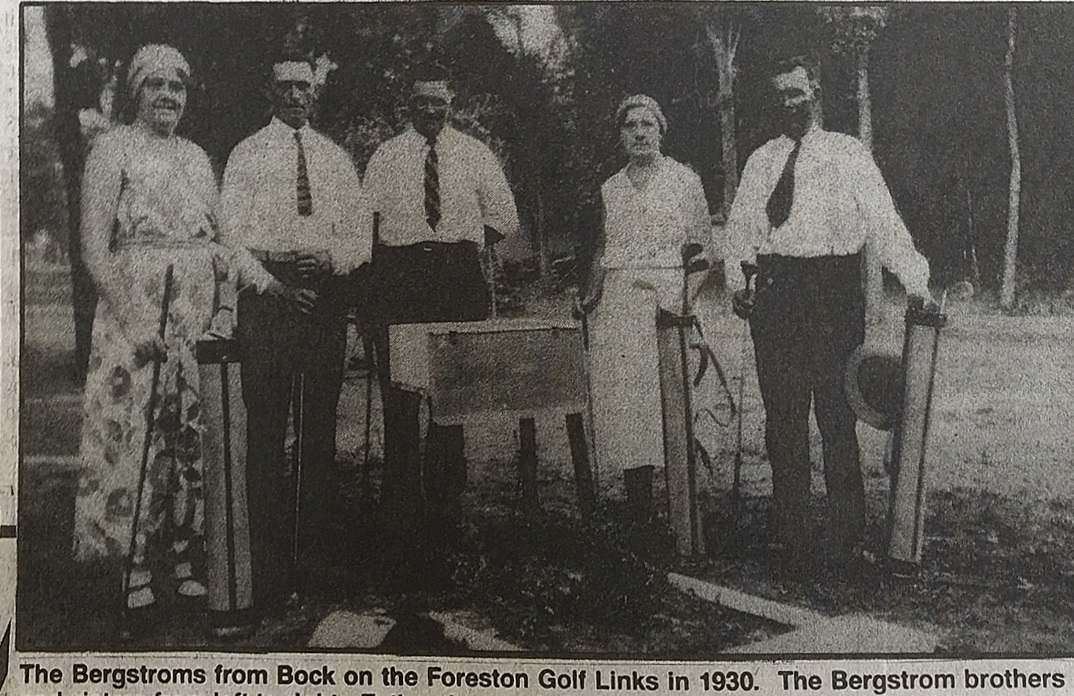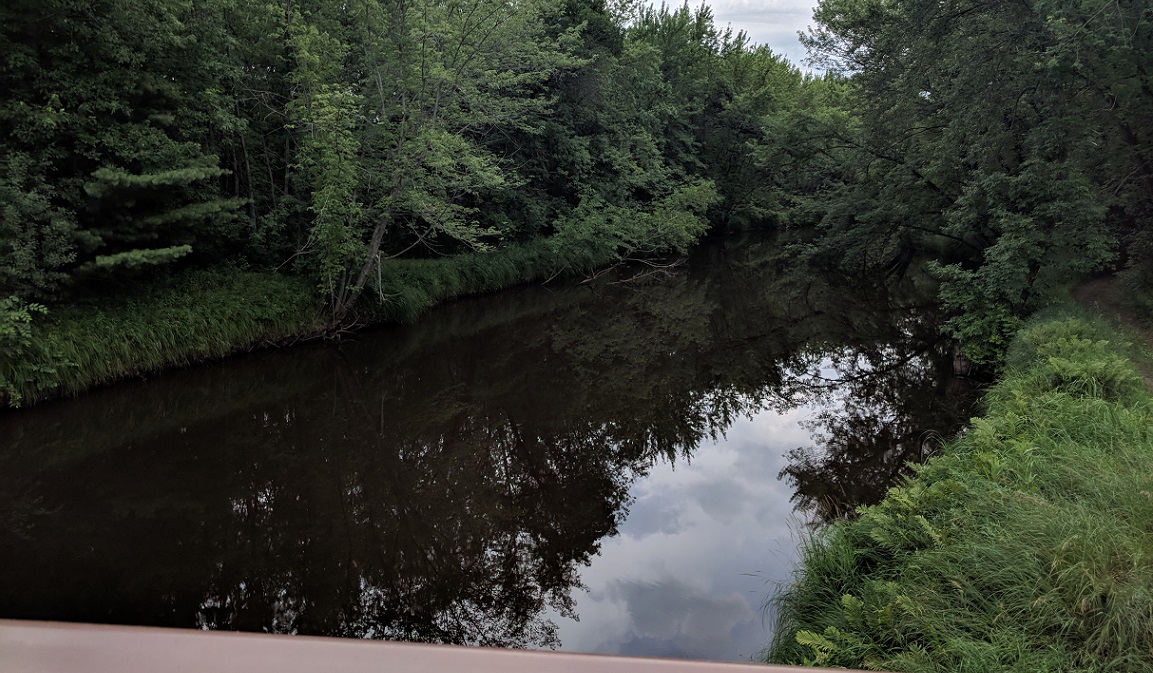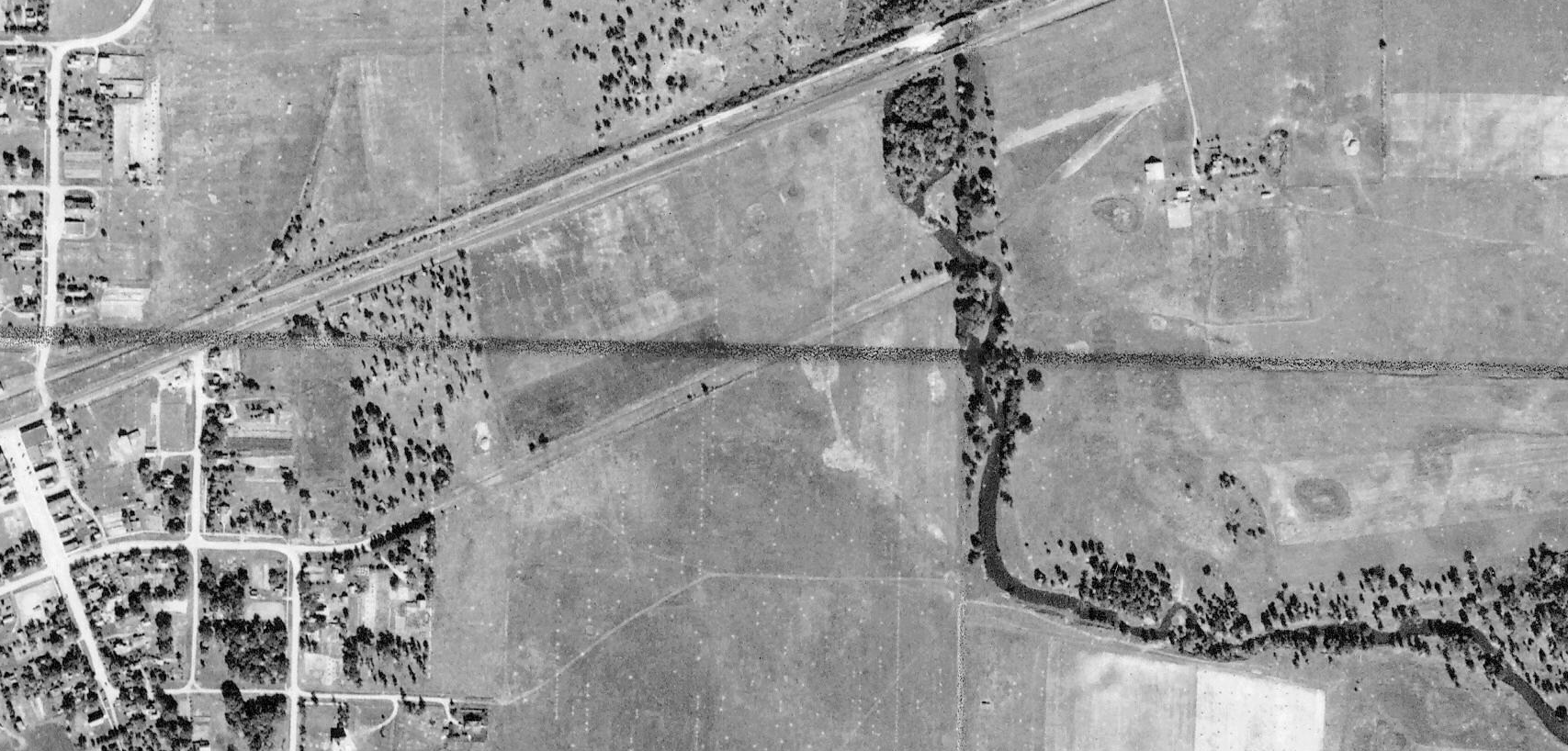After organized golf on the Rum River got off the ground in 1928 with the founding of Princeton Golf Club, the game quickly forged upstream.
The next stop was up the Rum’s West Branch to Foreston, about 15 miles north of Princeton. There, and coincidentally within shouting distance of Highway 23, where a handful of other lost courses in the St. Cloud area lie, was a course that lived a meteoric existence — popular but short-lived.
Mille Lacs County Golf Club (Minnesota lost course No. 200, yes, 200!) opened on May 5, 1929, according to the Mille Lacs County Times. The course consisted of nine holes on the riverbank, “a beautiful stretch of 52 acres, with sand greens, sand boxes, and benches at each tree.” About 25 people played the course on Opening Day, and the club had 25 members, with inaugural officers from the cities of Milaca, Princeton, Foley and Foreston.
The club also boasted, according to the newspaper, the services of “a nine-foot lawn mower.”
The golf course was designed by Paul Schmanda, St. Cloud Country Club professional and a player of some repute, having played in the first two St. Paul Opens, in 1930 and ’31, at Keller Golf Course.
As the club’s name and roll of officers implied, Mille Lacs County GC appeared to have been more of a regional hub for golf than a single-community golf course, especially since the 1930 population of Foreston was a mere 280. One of the club’s first tournaments was staged in late August 1929, with players from Milaca, Princeton, Onamia, Foley and Foreston entered, according to a Mille Lacs County Times story. Scores ranged from an 80 posted by M.L. Ward, superintendent of schools at Foley, to a 103 by Elias Johnson of Onamia.
“The Foreston course is but four months old,” the story read, “and most of the players have taken up golf since that time, several playing their first game but a few days prior to the tournament.”

A January 1930 story in the St. Cloud Times included a variation on a ubiquitous theme among Minnesota’s lost golf courses, boasting that the club “has one of the most attractive golf links in the state.”
In July 1930, a Mille Lacs County Golf Association was held, with a $1 entry fee. The 34 entrants were from Milaca, Foley, Princeton and Foreston. Ward won again, with an 86. Bob Hall of Princeton won a long-driving contest with a smite of 231 yards.
“Just before the long drive (contest),” the St. Cloud Times reported, ” ‘Pro’ Brokel of Armours course, Minneapolis, who has been at the course for a few days, gave a few exhibition drives and the average of his drives was about 280 yards each.”
“Brokel” presumably was Frank Brokl, a Minneapolis pro and the 1929 Minnesota State Amateur champion. Brokl also specialized in designing small-town courses across Minnesota, South Dakota and Iowa, including now-lost courses at Luverne, Lake Benton and Ivanhoe.
Perhaps one source of the popularity of the Foreston course had to do with economics, especially in the early years of the Great Depression. The course offered free golf on Wednesdays, according to a June 1930 St. Cloud Times story, and might have offered an expanded version of free golf by the time the following Times story was published on Sept. 3, 1930.
“Free Golf Near Milaca No More,” the headline read. “The offer of free golf on the course of the Mille Lacs County Golf club near Foreston has been withdrawn because the grounds are in such demand that the club membership must be taken care of first. … With the popularity of the game continuings (sic) here it leaves the golf club with only a few remaining memberships.”
The year 1931 arrived with a similarly bright outlook. “Foreston Golf Course Popular,” headlined a St. Cloud Times story from April 14.
“Dozens of golf enthusiasts are paying tribute in the fine weather and the excellent course maintained again this year near Foreston by the Mille Lacs County Golf association. The course, opened there this week, is the mecca of all who have the time to play.
“A caretaker has been employed this year to keep the course in condition. The greens will be enlarged and the playing should be much better than last season. …”
The Foreston course hosted a five-county tournament in September 1931, featuring players from Mille Lacs, Benton, Kanabec, Sherburne and Pine counties.
Yet something fateful occurred in the following months. Though the Mille Lacs County Times reported in April 1932 of a golf association meeting and added that “the course will be improved,” there is no record that I could find of golf being played on the Foreston course in 1932. Later that year, a course in nearby Milaca was opened, and the Mille Lacs County Golf Club presumably was a memory.
BUT WHERE?
As with the second iteration of Princeton Golf Club, the Mille Lacs course at Foreston mounted a determined effort to hide its exact along-the-Rum location from me (or maybe I just wanted to concede defeat too easily). I had found a 1930 newspaper reference to the course lying “on Highway 23 near Foreston” but came up dry on other repeated attempts to find the place. A 1939 aerial photo, the earliest available online, offered nothing definitive.
Not long after that, the Mille Lacs County Historical Society informed me that the course was in Milo Township, at the northwest corner of Section 3. That helped, and placed the golf course’s resting place just less than a mile east of downtown Foreston. A visit to the city in early July 2018 produced a suggestion from a city employee that the course was near the city’s water reservoirs. A short drive east got me within probably a few hundred yards of the old sand greens, but not definitively on the site.
I received a phone call the next week from Bob Hjort, a Foreston native now living in Duluth. Hjort’s father, William, once owned the land on which the golf course lay. A 1975 plat map shows 49 acres of land owned by William Hjort east of Foreston and meeting the Rum River at its northeastern tip.
Somewhere in that area rests the “mecca for all” and, for me, the 200th identified lost golf course in Minnesota.


Special thanks to Wendy Davis of the Mille Lacs Historical Society for research help. Next: Crossing back over the Rum to the original Milaca Golf Club.